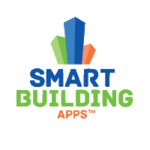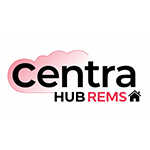Description

Smart Building Apps

dotloop
Comprehensive Overview: Smart Building Apps vs dotloop
Overview of Smart Building Apps, dotloop
a) Primary Functions and Target Markets
Smart Building Apps: Smart building applications primarily focus on enhancing the efficiency, comfort, and sustainability of buildings. These apps integrate with IoT devices and systems to optimize the management of various building operations and are primarily aimed at the following markets:
- Building Management/Facility Managers: For operational efficiency, energy management, and cost reductions.
- Commercial Real Estate Owners: To increase property value and attract more tenants through enhanced building features.
- Residential Property Managers: To improve tenant satisfaction and operational efficiency.
- Tenants/Occupants: For personalized control over their immediate environment for comfort and productivity.
Primary Functions:
- Energy Management: Monitoring and optimizing energy consumption.
- Security and Access Control: Enhanced safety measures and restricted access areas.
- HVAC Management: Optimizing heating, ventilation, and air conditioning.
- Lighting Control: Automated and intelligent lighting solutions.
- Occupancy and Space Utilization: Real-time data on space usage for optimizing space allocations.
- Maintenance Management: Predictive and timely maintenance activities.
dotloop: Dotloop is a real estate transaction management software focusing on streamlining the real estate transaction process. It is designed to meet the needs of:
- Real Estate Agents and Brokers: Facilitating easier transaction management.
- Real Estate Teams and Offices: Coordinating complex transactions and ensuring compliance.
- Home Buyers and Sellers: Simplifying the paperwork process and improving transparency.
Primary Functions:
- Document Management: Creation, editing, and sharing of documents digitally.
- Electronic Signatures: Secure and legal signing of contracts and documents.
- Task Management: Responsibilities and deadlines tracking for transaction processes.
- Transaction Management: Seamless and organized closing processes.
- Compliance and Audit Trails: Ensuring all regulatory requirements are met.
b) Market Share and User Base
The smart building market is continuously growing with numerous players, and it is characterized by a fragmented landscape with various solution providers. Market share can vary greatly depending on the specific functionality or integration offered. Large companies like Siemens, Schneider Electric, and Honeywell have significant market penetration due to their comprehensive solution offerings.
Dotloop, on the other hand, is a prominent name in real estate transaction management software. As part of Zillow Group since 2015, it benefits from Zillow’s vast reach. While it doesn't face the same fragmented landscape as the smart building industry, it competes with other proptech solutions like DocuSign, TransactionDesk, and Skyslope. Dotloop claims millions of users across the U.S., particularly leveraging its integration with Zillow.
c) Key Differentiating Factors
Smart Building Apps:
- Integration with Existing Systems: The ability to integrate with existing building management systems is a crucial factor.
- Scalability and Customization: Offering tailored solutions for different building types and sizes.
- Real-Time Analytics and Reporting: Providing actionable insights for building operations and decision-making.
- Open vs. Closed Systems: Some offer an open-architecture allowing integration with third-party devices and platforms.
dotloop:
- User Interface and Experience: Intuitive design aimed at reducing the complexity of real estate transactions.
- Integration with Real Estate Platforms: Strong integration with Zillow provides a competitive advantage.
- Security Features: Enhanced data protection and compliance with industry standards.
- Comprehensive Transaction Management: An all-in-one platform that covers the complete transaction lifecycle, from document creation to closing.
Conclusion
While both smart building apps and dotloop serve to streamline processes through technological innovation, they do so in very different domains. Smart building apps enhance operational efficiencies within physical structures, whereas dotloop focuses specifically on the real estate transaction process. Each faces its unique competitive landscape with specific demand drivers and trends influencing development and market perception.
Contact Info

Year founded :
2008
Not Available
Not Available
Canada
Not Available

Year founded :
2008
+1 513-257-0550
Not Available
United States
http://www.linkedin.com/company/dotloop
Feature Similarity Breakdown: Smart Building Apps, dotloop
Smart Building Apps and dotloop serve different primary functions, but there can be some general areas of feature similarity as well as distinct differences. Here's a breakdown of similarities and differences focusing on core features, user interfaces, and unique features:
a) Core Features in Common
-
Automation and Workflow Management:
- Both Smart Building Apps and dotloop often include features for managing workflows and automating processes. Smart Building Apps automate building management tasks like lighting, HVAC, and security, while dotloop automates real estate transaction workflows.
-
Data Analytics:
- Both platforms may offer analytics functions. Smart Building Apps analyze building performance, energy usage, and occupancy data, while dotloop provides insights into transaction progress and agent performance.
-
Integration Capabilities:
- Integration with other software is typically supported in both smart building solutions and dotloop. For Smart Building Apps, integrations might include IoT devices and facility management software, whereas dotloop might integrate with tools like CRM systems, email, and digital signature platforms.
-
Mobile Access:
- Both solutions provide mobile access, although the specifics of these mobile functionalities cater to different user needs (building management vs. real estate transactions).
b) User Interface Comparison
-
Design Focus:
-
Smart Building Apps: These typically focus on dashboards for real-time data monitoring and control interfaces for building systems. The design may emphasize clear visualization of energy consumption, alerts, and system statuses.
-
dotloop: The interface is geared towards ease of document management and transaction tracking. It often includes tools for collaborating, negotiating, and signing contracts digitally.
-
-
User Experience:
-
Smart Building Apps: Given their technical focus, these apps may offer complex interfaces that prioritize functionality over simplicity, aimed at facility managers or building operators.
-
dotloop: User experience tends to be more intuitive and user-friendly to accommodate real estate agents, brokers, and clients who may not be tech-savvy.
-
-
Customization:
- Both types of software offer some level of customization, but Smart Building Apps might allow deeper customization related to specific technical parameters, while dotloop offers custom branding and document customizations better suited for real estate applications.
c) Unique Features
-
Smart Building Apps:
- IoT Device Integration: Specifically designed to integrate with a variety of IoT devices like smart thermostats, lighting systems, and security cameras.
- Predictive Maintenance: Use of AI to predict equipment failure before it happens, reducing downtime.
- Energy Management: Advanced features for tracking and optimizing energy use to improve sustainability and reduce costs.
-
dotloop:
- Document Management and E-signatures: Offers comprehensive paperless transaction management, with a focus on facilitating digital negotiations and e-signatures.
- Compliance Tracking: Built-in compliance features to help ensure that transactions adhere to real estate regulations and standards.
- Task Templates and Transaction Coordination: Pre-designed task checklists and transaction coordination tools to streamline real estate deals.
In summary, while Smart Building Apps and dotloop share some surface-level similarities like automation, analytics, and mobile access, they are fundamentally designed for different industries and use cases. This is reflected in their user interfaces and unique features, where each product caters specifically to the needs of its target users.
Features

Facility Management
Occupant Comfort
Energy Management
Security & Access Control

Compliance and Security
Collaboration Tools
User Experience
Transaction Management
Integration and Connectivity
Best Fit Use Cases: Smart Building Apps, dotloop
Smart Building Apps and dotloop serve different purposes and are suited to different types of businesses, projects, and industry verticals. Here's a breakdown of their best fit use cases and the scenarios where each would be the preferred option:
Smart Building Apps
a) For what types of businesses or projects is Smart Building Apps the best choice?
Smart Building Apps are designed to enhance the operational efficiency, sustainability, and user experience of buildings. This type of technology is ideal for:
- Commercial Real Estate & Property Management: To optimize energy usage, manage facilities more efficiently, and improve tenant satisfaction.
- Large Corporate Campuses: For managing complex infrastructure, ensuring workplace safety, and facilitating smart resource allocation.
- Hospitals and Healthcare Facilities: To ensure compliance with safety and hygiene standards and to manage energy and resources efficiently.
- Educational Institutions: To monitor energy consumption and create environmentally friendly campuses.
- Hospitality Sector (Hotels & Resorts): To provide personalized guest experiences and efficient energy management.
- Smart City Projects: To integrate building systems with city-wide infrastructure for improved urban living.
d) How do these products cater to different industry verticals or company sizes?
Smart Building Apps are versatile and can be scaled according to the size and needs of the business. They cater to different verticals by focusing on specific needs:
- Energy Management: Used across industries to lower energy consumption and costs.
- Security and Safety: Hospitals and corporate buildings use these for advanced safety monitoring.
- Space Optimization: Helps businesses optimize space utilization and design more efficient work environments.
dotloop
b) In what scenarios would dotloop be the preferred option?
dotloop is a real estate transaction management software best suited for:
- Real Estate Brokerages: To streamline transaction processes and compliance, improve communication, and enhance client service.
- Individual Real Estate Agents: For efficient management of transactions and documents, enabling seamless interaction with clients.
- Real Estate Teams: To improve collaboration among team members by providing a centralized platform for managing transactions.
- Property Management Firms: For handling lease agreements and documentation efficiently.
- Mortgage and Title Companies: For integrating various stages of real estate transactions to ensure smooth processes overall.
d) How do these products cater to different industry verticals or company sizes?
dotloop is particularly focused on the real estate industry but serves varying sizes of operations from individual agents to large brokerages:
- Scalability: Offers features that scale from individual agents to extensive brokerage operations, accommodating growth.
- Integration: Connects with various MLS systems and other real estate platforms to provide a seamless experience across different stages of the property transaction process.
- Compliance and Security: Provides tools for risk management and maintaining compliance with real estate laws and regulations, which is crucial for brokerages of all sizes.
In summary, Smart Building Apps are best suited for operational efficiency in property management and various sectors that require intelligent use of building resources, while dotloop is tailored towards the real estate industry, streamlining transaction processes and enhancing client interactions. Both solutions are scalable and adaptable to different company sizes and industry needs.
Pricing

Pricing Not Available

Pricing Not Available
Metrics History
Metrics History
Comparing teamSize across companies
Conclusion & Final Verdict: Smart Building Apps vs dotloop
To provide a comprehensive conclusion and final verdict for Smart Building Apps and dotloop, we'll evaluate them based on their value proposition, pros and cons, and offer recommendations for users deciding between these two products.
a) Best Overall Value
Smart Building Apps and dotloop serve different primary functions and cater to different user needs. Smart Building Apps focus on facility management, energy efficiency, and automation of building systems, making them valuable for building managers, facility operators, and stakeholders aiming for sustainable and efficient building operations.
On the other hand, dotloop specializes in real estate transaction management, offering features like digital document signing, transaction tracking, and collaboration tools for real estate agents, brokers, and clients.
Best Overall Value:
- If your primary need is related to real estate transaction management, dotloop offers the best overall value due to its niche focus and comprehensive set of features designed specifically for real estate professionals.
- Conversely, if your focus is on managing building operations and achieving sustainability goals, Smart Building Apps provide better value for facilities management.
b) Pros and Cons
Smart Building Apps
Pros:
- Offers robust tools for monitoring and managing energy consumption.
- Enhances building operational efficiency and sustainability.
- Automates various aspects of facility management, saving time and resources.
- May integrate with other building management systems for comprehensive oversight.
Cons:
- Could have a steep learning curve for users unfamiliar with facility management technologies.
- Implementation and integration may require significant upfront investment and time.
- Limited applicability outside of building management contexts.
dotloop
Pros:
- Streamlines real estate transactions with digital document management and e-signature capabilities.
- Facilitates collaboration between agents, brokers, and clients, reducing deal completion time.
- User-friendly interface designed with real estate professionals in mind.
- Supports compliance and audit trails with secure document handling.
Cons:
- Primarily geared towards the real estate market, thus limited use outside this industry.
- Some users might find the pricing structure not cost-effective for smaller transactions or teams.
- Requires internet connectivity for full functionality.
c) Recommendations for Users
Recommendations:
-
Assess Your Primary Needs:
- If your organization primarily requires tools for managing building operations, enhancing sustainability, and improving energy efficiency, focus on Smart Building Apps.
- For managing real estate transactions, document signing, and facilitating client-agent interactions, dotloop is the more suitable choice.
-
Consider Integration and Scalability:
- Evaluate how each solution integrates with your existing systems and infrastructure. Consider future scalability needs, especially if your operations expand or evolve.
-
Trial and Training:
- If possible, utilize trial versions of either solution to better understand their interfaces and functionality. Ensure adequate training is provided to staff to maximize the benefits of the chosen solution.
-
Evaluate Budget and ROI:
- Analyze both short-term and long-term costs associated with each solution. Weigh these against the potential return on investment in terms of efficiency gains and productivity improvements.
By considering these factors, users can make a well-informed decision that aligns with their operational goals and industry requirements.
Add to compare
Add similar companies



